“105,000 people are homeless in Australia. Of them, 42% are under the age of 25. Young people in our major cities have little hope of owning a decent home unless their parents can help them out”, as I set the scene, my Singaporean audience looked puzzled. What do you mean, you don’t have housing for people? Where do people live then? How do they work without having a home to return to every night?
Yes, that’s my point -- and the point affordable housing advocates have been making forever. To solve homelessness, we need to provide housing, structured practical and psychological support and employment.
Housing for Community Cohesion
In Singapore, 80% of the population live in public housing or more commonly known as Housing & Development Board (HDB). I wouldn’t associate the term public housing with good quality living in Australia, but in Singapore, there is a sense of community, affordability and safety that comes with it. Singaporean nationals are able to purchase a flat at a subsidised cost, drawing down on Central Provident Fund (Singapore’s social security/superannuation), a pool of savings that comprise 20% of their salary and 17% contribution by their employer. Home ownership rate is 91%, noting however, that ownership in Singapore means a lease period of up to 99 years -- properties are returned to the state after the lease period for redevelopment or lease renewal. As HDB was only formed in 1960, Singapore is yet to see the full impact of lease expiration.
Citizens have a high level of trust in the Singaporean government, and also a high level of expectation that the state will take care of them. After all, Singapore’s GDP growth since the 1960s is astonishing, especially when compared to neighbouring countries that started out similarly. The older generation in particular, who remember Singapore’s poorer past, are appreciative of the significant improvement in their quality of living.
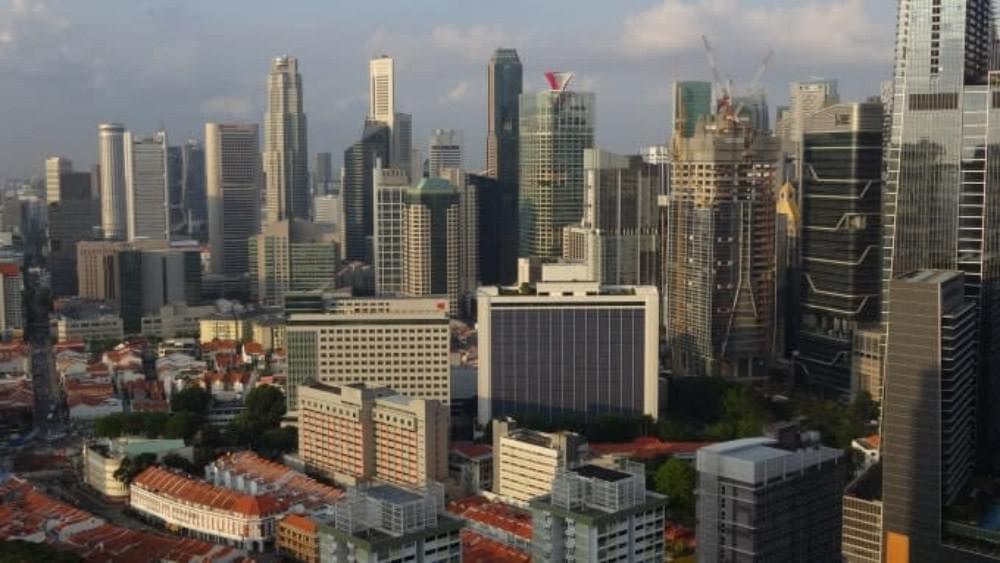
Singapore's GDP growth since the 1960s is astonishing.
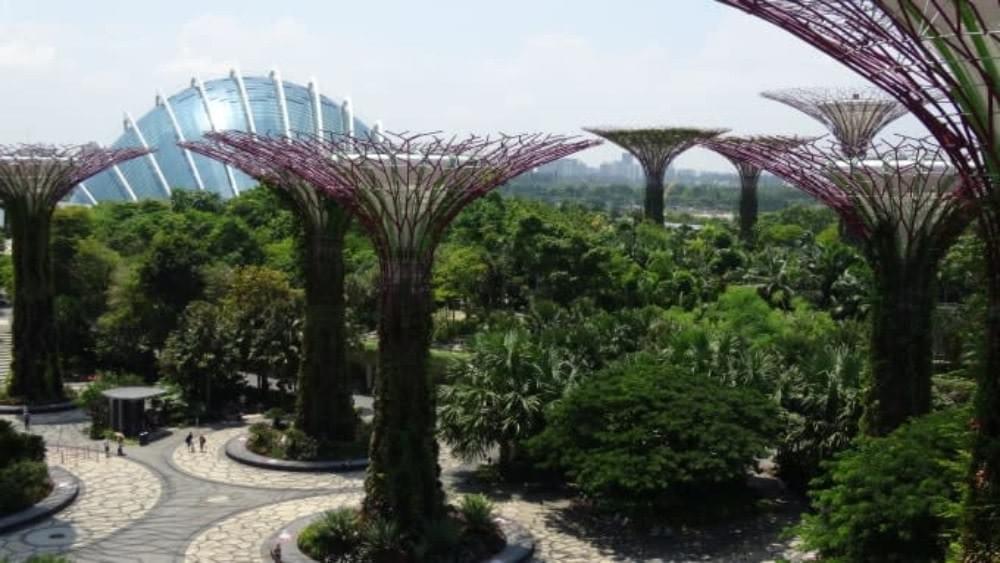
Supertree Grove at Gardens by the Bay are vertical gardens, viewing platforms, creative lighting and beautiful sculptures all in one.
Singapore’s ethnic composition is 70% Chinese, 15% Malay, 10% Indian and 5% Other; 45% of total population are international migrants. Pulling together the diverse ethnic groups under the umbrella of Singapore has been a challenge, and many policies have been geared toward creating ethnically diverse and mixed-income neighbourhoods. Selling a flat is not just a matter of finding a buyer – it is a matter of finding the right buyer that meets the ethic and income quota for the specific neighbourhood. All Singaporean kids are required to attend public schools, with some exceptions given to international diplomats or similar. Inclusionary Zoning has been widely practised, but ethnic zoning? “Does this really work?”, I asked Centre for Liveable Cities (CLC), the research and advisory arm of the Singaporean Government dedicated to sustainable and liveable cities. There has been no specific study to measure its success, there are of course a number of contributors to Singapore’s community cohesion; but CLC cites the low number of racially provoked incidents as one indicator.
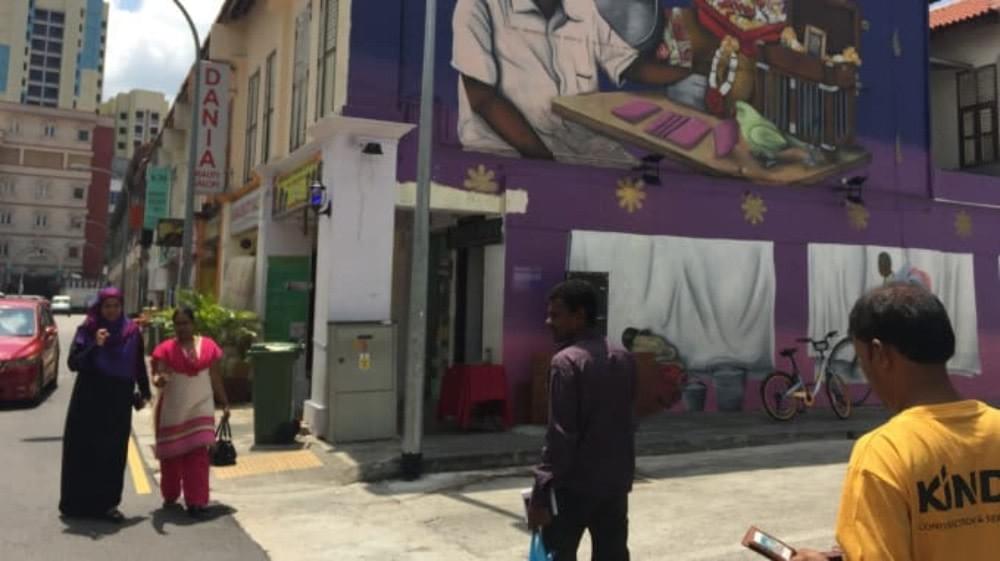
Little India is where the locals shop and socialise and embodies a wonderful sense of authenticity. It is also the site of the Little India riot of 2013, the first riot since 1969, considered to have been flamed by years of neglect on migrant workers' rights.
Everybody Contributes to the Garden City
This well-organised city accommodates 3.9 million residents in an island half the size of London. Most notably, the MRT system (No. 2 attraction on Tripadvisor!) is efficient, clean and affordable costing around 70 Singaporean cents for a short journey, compared to A$2.42 off peak minimum cost in Sydney. Coupled with the bus network and strict car ownership control, public transport can get you pretty much everywhere, fast. With so many people, one might expect crowded and dirty streets, but the abundance of greenery provided and maintained by commercial buildings, residential flats and individual shops creates places that are quite pleasant to be in. In fact, everyone seems to love greenery. There is always a small garden, pot plant or green wall all cared for voluntarily – no space is wasted, there isn’t much to go around. Even commercial buildings and shopping centres are quite generous with their contribution to the public realm, whether it is large setbacks with fountains, lush greenery, seating for the public, or through-block links. Urban Development Authority recently implemented Design Guidelines and Good Practice for Privately Owned Spaces, mandatory for applicable private developments and stipulated in the conditions of land sales from the state.
While Singapore’s international image may have been high-rise shiny towers, there is a movement toward bringing back more human-scale, diverse experiences onto the ground level. The Singaporean Government is seeing that this cannot be provided by the government alone; the citizens need to be the drivers of change.
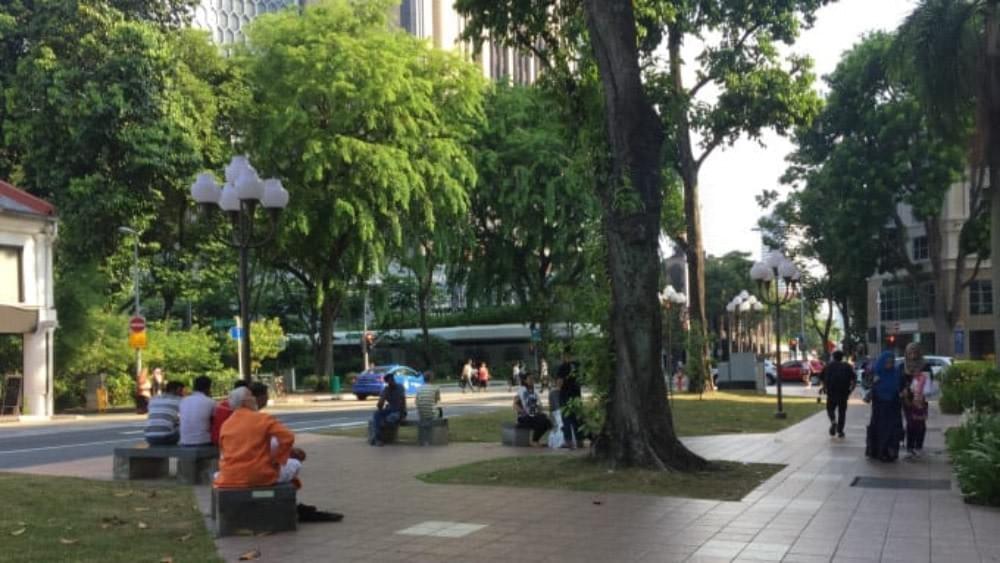
People relax in the generous public domain. Footpaths offer much more than long, narrow straight paths to walk through.
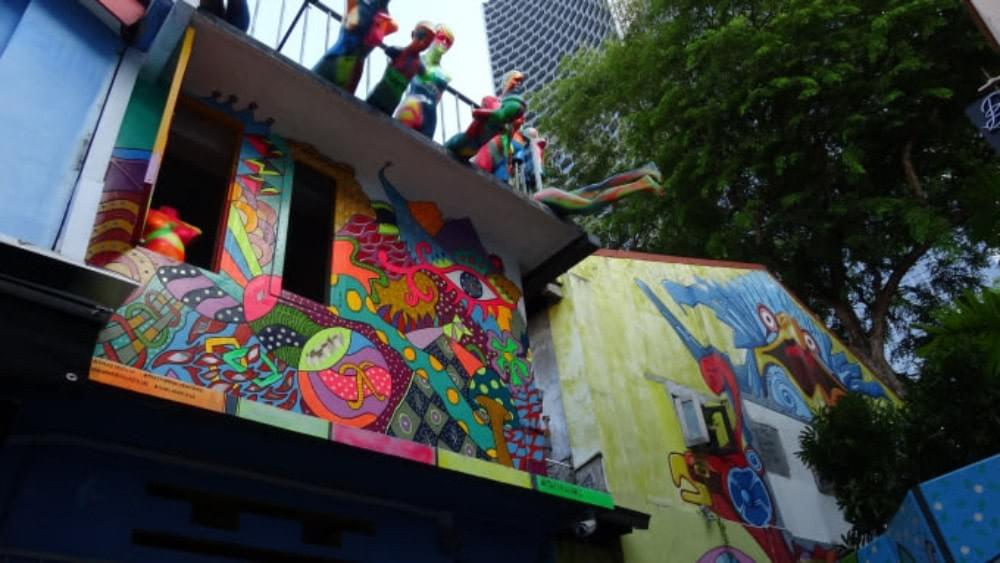
A corner of The Arab Quarter has a number of shopfronts showcasing bold murals.
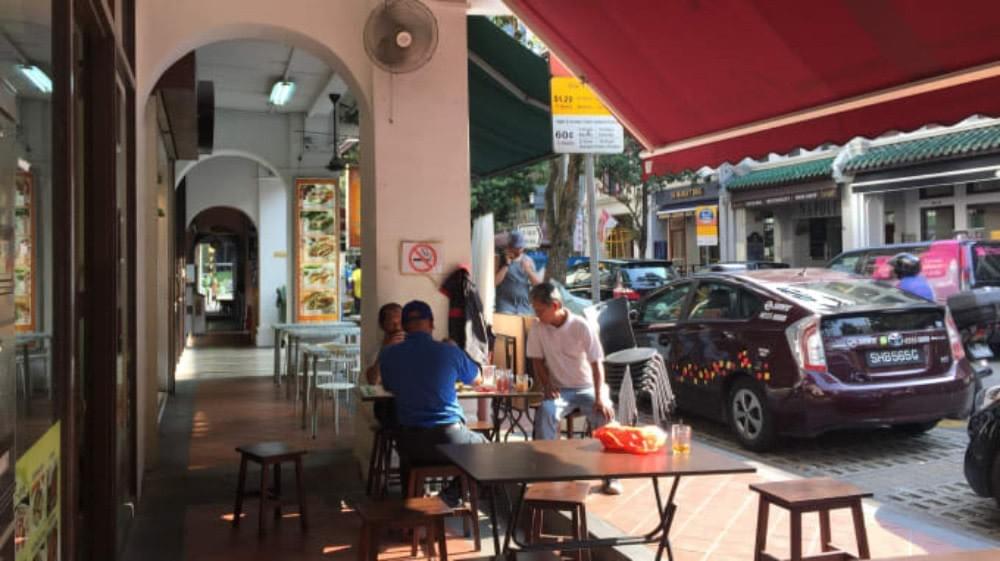
Older men play a game of Go in a Chinatown restaurant.
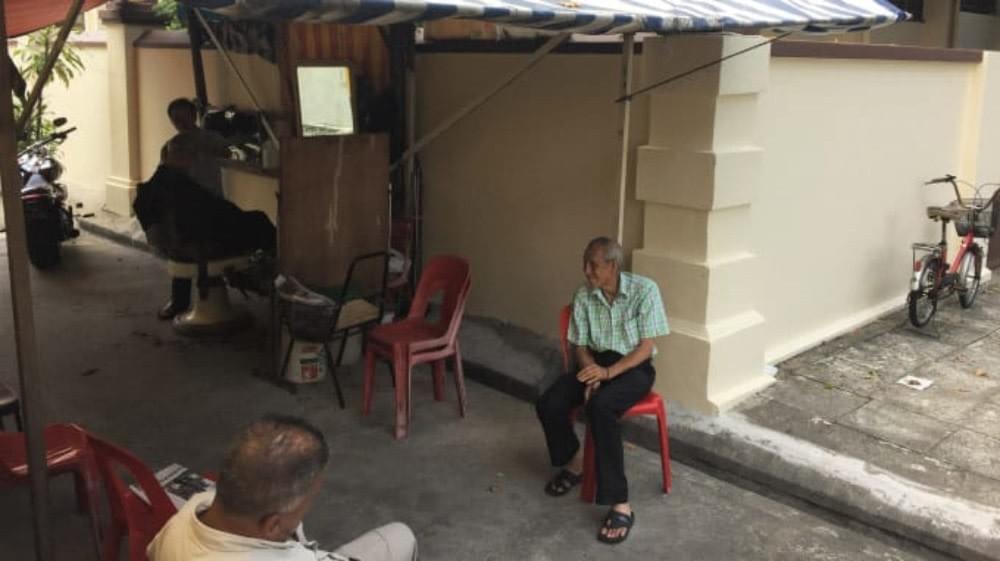
Older men get haircuts in a quiet residential laneway in The Arab Quarter
The Case for Citizen Engagement
Melissa Kwee, CEO of National Volunteer and Philanthropy Centre, cites three factors that are driving the desire for improved citizen engagement: increasing interest in participation from the citizens; the government’s plan to build community resilience bottom-up and reduce social services cost; and the young generation’s desire for purpose and independence. Participatory planning is still new in the country and cultural shift hard, but Mizah Rahman, Co-founder of Participate in Design, believes citizen engagement is critical especially in Singapore where top-down culture has been the norm. She quizzes me as an example: “You share a corridor with your neighbours, and your next-door neighbour leaves a bike that gets in your way. What do you do?” “You ask them to keep it inside”, I reply. Singaporeans? They would call or write to their town council who will then notify the neighbour about the inconvenience. Mizah says Singaporeans will try to avoid conflicts where possible, and community participation can be challenging. I hear a similar story from Bernise Ang, Co-founder of Zeroth. When asked what’s the one thing she would like to see more of in the future of Singapore, she says healthy debates – cultural permission for people to have stimulating discussions without feeling uncomfortable or being shut down.
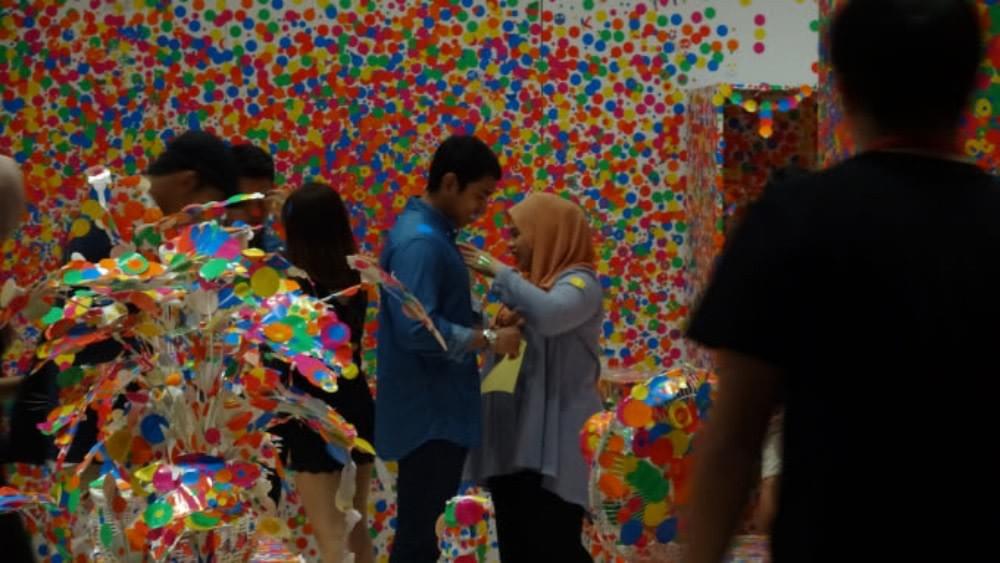
Young and old people play with coloured dots at a participatory installation, Obliteration Room, at the National Gallery Singapore.
Who’s Missing?
Then who are at the risk of being excluded from such conversations?
While Singapore’s public housing policy caters for most Singaporeans, those that don’t fit neatly into the typical Singaporean category face systematic discrimination from accessing affordable housing. Typically, Singaporeans live with their parents until they get married. Marriage is part of the eligibility criteria for public housing application for those under the age of 35. So what do you do if you are an unmarried single mum, gay or simply haven’t found a suitable spouse? You live with your family until you turn 35 or if you are lucky enough to be young and wealthy, you can purchase a private flat where no ethic/mixed-income quota applies. Marriage in Singapore is more than just a celebration of love, legal commitment or practice of tradition. It is a pathway to financial independence and empowerment, made harder to achieve for those already suffering from social stigma and exclusion. Also, the falling general marriage rate, rising first marriage age and the increasing number of inter-ethic marriages may prompt policy reform.
Low-skilled foreign workers are also at risk. They include labourers from India and Bangladesh, and domestic workers from the Philippines. Domestic workers, for instance, tend to be live-in workers/nannies who get free lodging and food. While this may seem like a good financial deal, it also means they don’t have a genuine first place (home) or second place (work); and finding a place to unwind in the public realm may be more important than for an average Singaporean. Money is tight (my Singaporean colleague tells me her helper is paid S$700/mth, however, this article suggests less) so dining out in cafes or going to a ticketed event is difficult. Instead, they need free, safe places. In Singapore, that place seems to be St. Andrews Cathedral, which recently opened its gates to not only visitors and mass attendees, but also those who have nowhere else to be. Every Sunday, domestic workers gather to picnic on the church grounds, use the toilets and don’t have to worry about getting moved on.
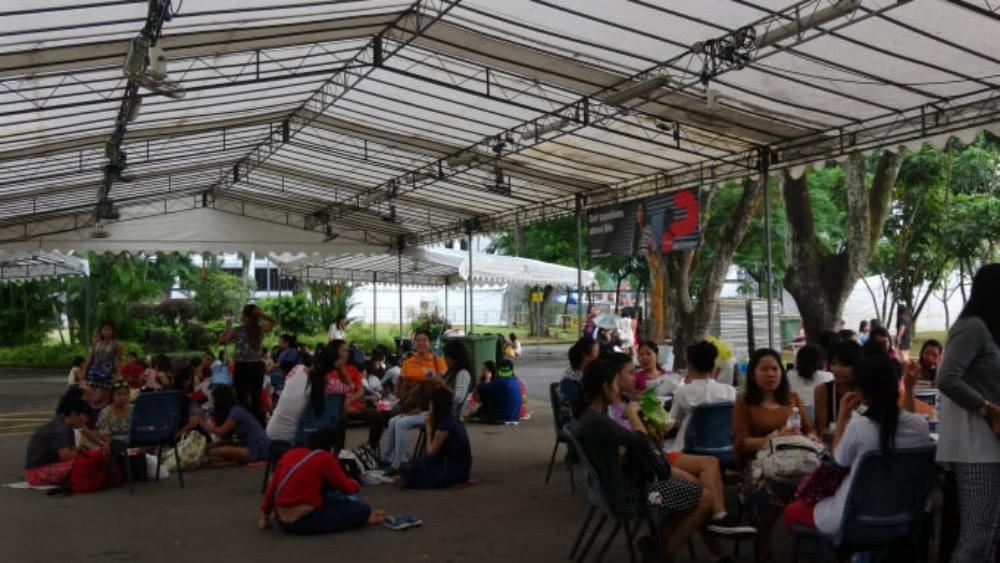
Domestic workers socialise at St. Andrews on a Sunday.
Learning from Singapore
Singaporeans tell me their social connection is declining and people are seeking more privacy as flat sizes are getting smaller. New and high-end public housing seems to reflect this, with more upper-level sky/roof gardens (still with full public access), and less vibrant ground-level shared spaces. Private housing is gated and exclusive to the rich. This is a shame because there is a lot to learn from community-oriented flats.
The ground levels of residential developments are freed up for resident activities both indoors and outdoors. Rather than ‘ground levels’, I would like to say ‘ground plane’ because the different neighbourhoods share the whole plane without much physical barrier in-between. Depending on the community’s needs, they are appropriated as community gardens, seniors’ hubs and wedding/funeral marquees etc (some seem to get used better than others, and I am yet to see studies on this). For example, GoodLife! Makan, a community kitchen for seniors living alone, provides a space where they can cook and share meals, rather than have social services deliver food. The ground levels are pedestrian- and bike-friendly, kept safe with passive surveillance, and well-integrated into the neighbourhood without hard barriers/fences.
Mixed-income housing isn’t just about the mix of different people; as a result, the neighbourhood’s economy and amenities respond to their different needs. High-end flats have cheap eats as well as wine bars, free outdoor exercise equipment as well as private gyms, and children’s playgrounds as well as seniors’ game spaces. There is little spatial disparity between the city’s neighbourhoods.
In Australia, we need to think hard about what goes on in our ground planes. Parking, carpark entries, storage, fences and blank walls do not contribute to community cohesion. Our exclusive neighbourhoods – closed off to too many physically, financially and psychologically -- create deeper social divides. Singapore’s strategy to build community resilience bottom-up from the ground level is a valuable lesson for profit-driven housing development that pays no attention to social cohesion.
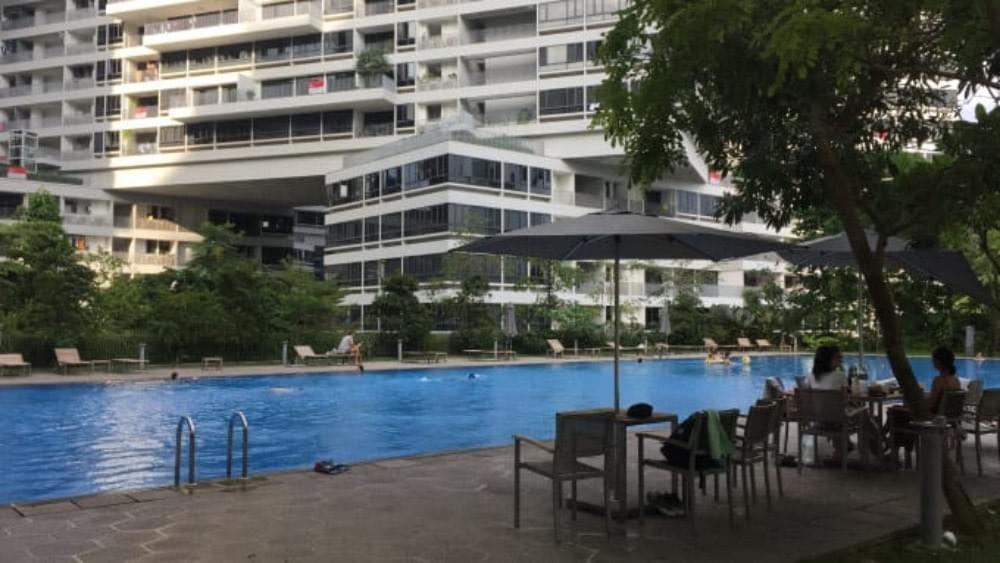
The Interlace, private development designed by OMA, is a gated community with its own pool, ponds, gardens, community hubs and playgrounds. Gated developments in Singapore seem to be desirable because of the high quality amenities on offer, rather than security reasons.
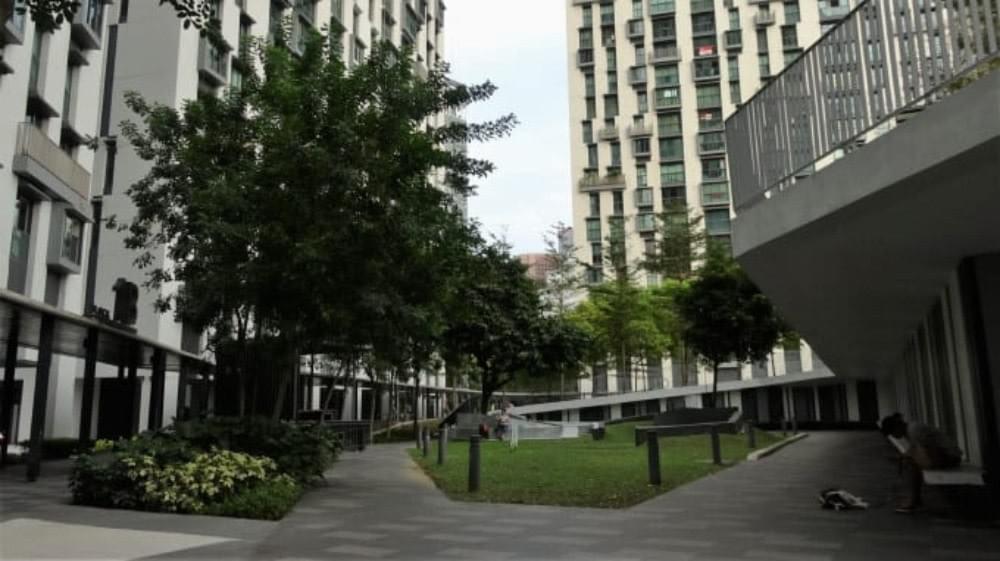
The Pinnacle is a high-end residential development (public housing) with a 50th storey Skybridge open to the public.
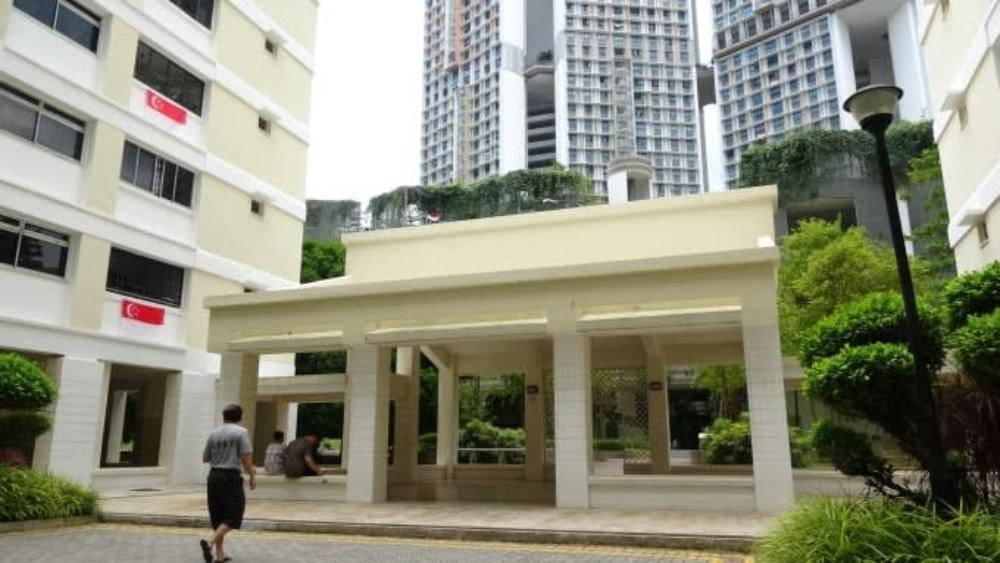
Strathmore (mid-end public housing, foreground) and SkyVille Dawson (high-end public housing, background) share the ground plane without much physical barrier. Moving between the public and semi-public realms is fluid.
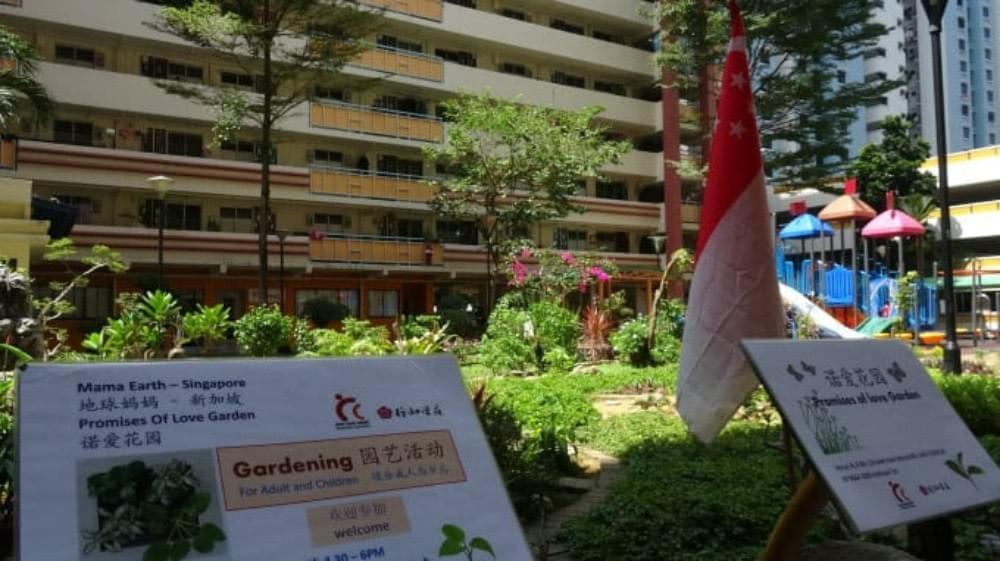
Residents of Tiong Bahru (low-end public housing) are invited to gardening.
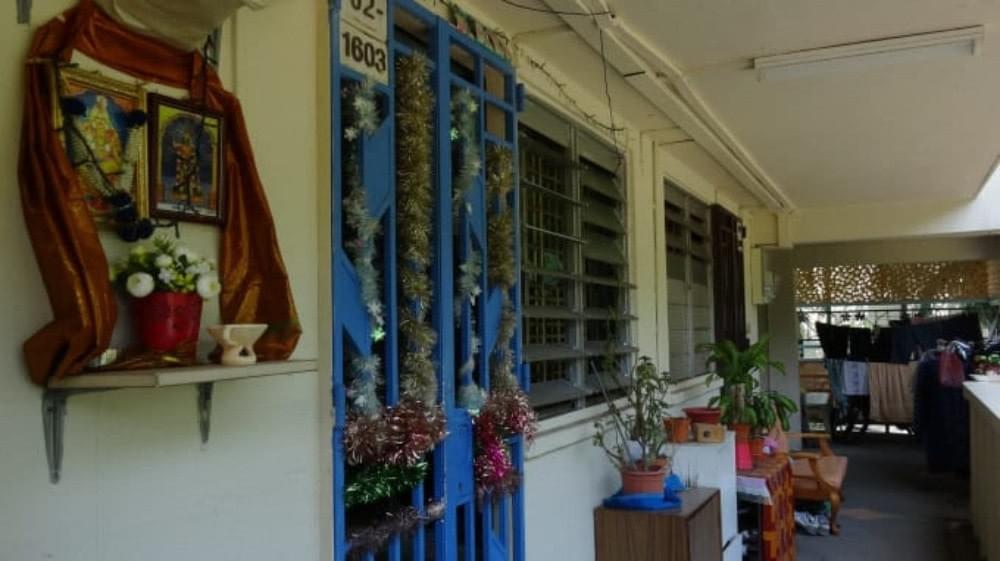
A resident at Tiong Bahru has personalised the shared corridor.
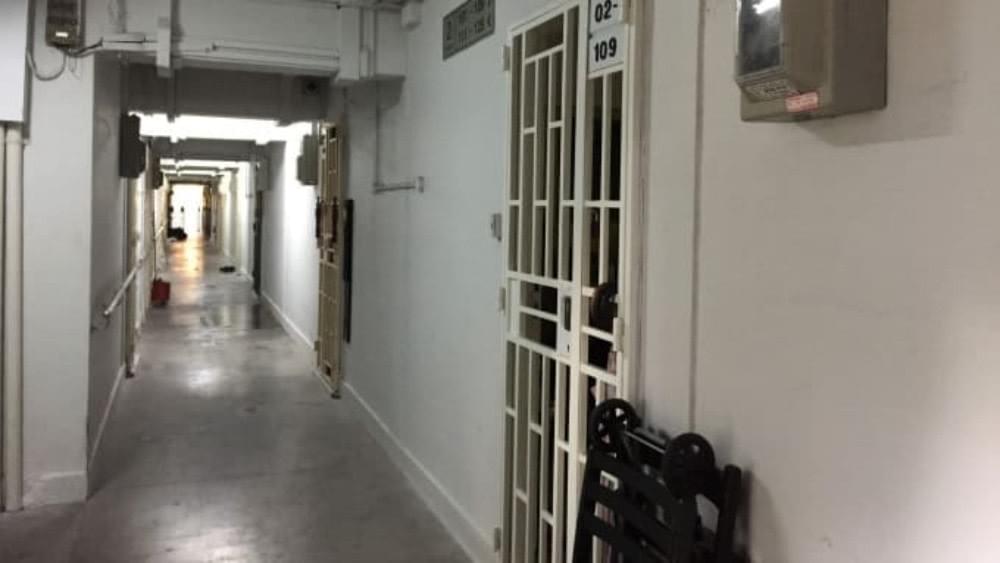
The worst condition I saw was at Jalan Kukoh (low-end public housing), with defensive materials and deteriorated amenities.
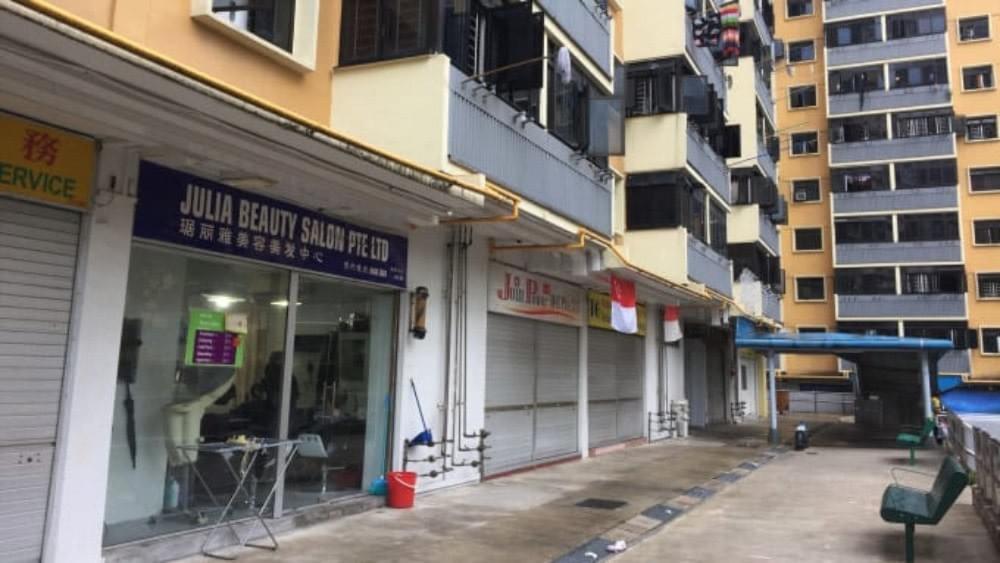
While in a poor condition, Jalan Kukoh still has everyday shops, eateries, gardens and playgrounds on the ground level.
Many thanks to these organisations:
- Centre for Liveable Cities (CLC)
- Ministry of Community, Culture and Youth (MCCY)
- National University of Singapore (NUS)
- National Volunteer and Philanthropy Centre (NVPC)
- Participate in Design (PiD)
- Singapore Tourism Board (STB)
- Zeroth
Neighbourhoods visited:
- Jalan Kukoh (low-end public housing)
- Aljunited Crescent (low-end public housing)
- Tiong Bahru (low-end public housing)
- Strathmore Estate (mid-end public housing)
- Dawson SkyVille (high-end public housing)
- Dawson SkyTerrace (high-end public housing)
- The Pinnacle at Duxton (high-end public housing)
- Caribbean at Keppel Bay (high-end private housing)
- The Interlace (high-end private housing)
- Not visited but recommended to study: Ardmore Park
This blog post was made possible by Westpac Social Change Fellowship, during which Julia Suh is visiting 15 cities to learn from their governments, social enterprises, consultants, academics and community organisers about how they are addressing inequality via design and management of the public realm and bringing about positive change.